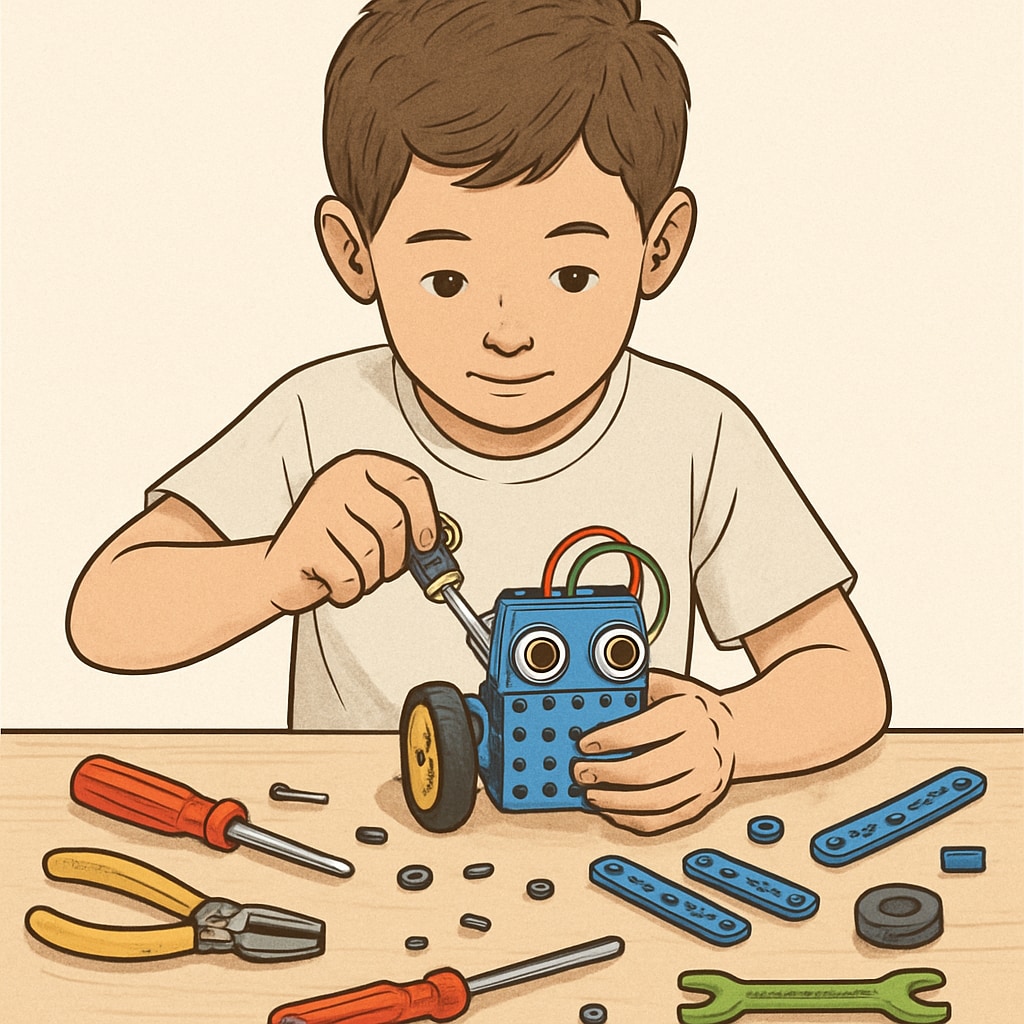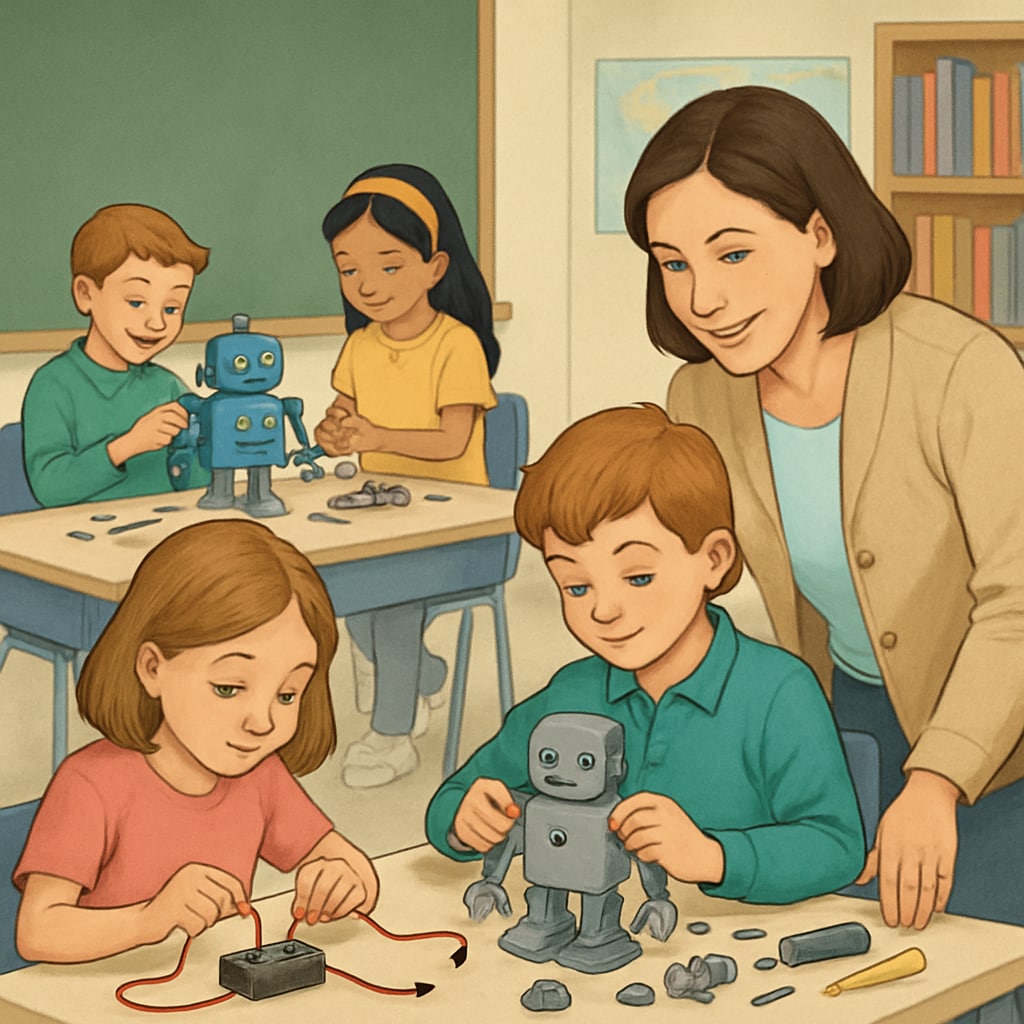When it comes to early education, creativity cultivation, and alternative education, the one-size-fits-all approach of traditional classrooms often falls short for children brimming with curiosity and creative drive. Especially for 4-year-old boys who gravitate toward hands-on activities like building circuits or assembling robots, conventional methods may stifle their potential. Instead, these young innovators require an educational path that nurtures their creativity while also laying a strong foundation in core skills. So, how can parents and educators unlock the genius in these budding inventors?
Identifying the Needs of Creative and Hands-On Learners
Creative and hands-on learners often exhibit an early interest in exploring how things work, solving problems, and experimenting with materials. These children thrive in environments where they can touch, build, and create. For example, a 4-year-old who dismantles household gadgets to understand their mechanics is demonstrating advanced problem-solving skills and a natural curiosity for engineering concepts.
However, traditional early education often prioritizes structured learning methods, such as rote memorization, which rarely cater to these children’s strengths. Therefore, identifying alternative educational approaches becomes crucial. Parents must seek programs that emphasize experiential learning, project-based activities, and open-ended exploration. This balance ensures that both creativity and foundational academic skills flourish.

Alternative Education: A Pathway to Cultivate Creativity
Alternative education provides an excellent framework for fostering creativity in young children. Unlike traditional classrooms, alternative models such as Montessori, Waldorf, and Reggio Emilia focus on child-led learning and experiential engagement. These approaches encourage children to explore their interests at their own pace, which is ideal for a hands-on learner.
For example:
- Montessori Education: Centers on self-directed activities and hands-on materials, such as puzzles, science kits, and manipulatives.
- Waldorf Education: Emphasizes creativity through storytelling, arts, and crafts, integrating hands-on tasks like woodworking or gardening into the curriculum.
- Reggio Emilia Approach: Focuses on project-based learning, encouraging children to investigate topics that interest them, such as robotics or natural sciences.
In addition to these established models, parents may consider enrolling their child in specialized STEM (Science, Technology, Engineering, and Math) programs designed for young learners. These programs often incorporate activities like coding, robotics, and engineering challenges, aligning perfectly with a creative child’s interests.

Balancing Creativity with Foundational Skills
While nurturing creativity is essential, it’s equally important to ensure children develop foundational skills like literacy, numeracy, and social interaction. This balance can be achieved by integrating creative activities into traditional learning domains. For instance:
- Using storytelling to teach reading, where children create their own stories and act them out.
- Introducing math through real-world applications, such as measuring materials for a craft project or counting components in a robot.
- Encouraging teamwork through group projects, which foster collaboration and communication skills.
Additionally, parents can support their child’s learning at home by providing age-appropriate tools and resources, such as LEGO sets, simple circuit kits, or art supplies. These tools not only enhance creativity but also build critical thinking and problem-solving skills.
The Role of Parents in Guiding Educational Choices
Parents play a pivotal role in shaping their child’s educational journey, especially when traditional schools may not fully accommodate a child’s creative and hands-on learning style. Open communication with educators about the child’s needs and interests can lead to customized learning plans. Furthermore, parents can explore extracurricular activities like robotics clubs, makerspaces, or science camps to supplement classroom learning.
It’s also essential to observe and adapt. For example, if a child shows signs of boredom or frustration with a particular teaching method, it may be time to explore new options. Flexibility and a willingness to experiment with different educational models can make all the difference in unlocking a child’s potential.
As Albert Einstein famously said, “Creativity is intelligence having fun.” By providing the right environment and resources, parents and educators can ensure that these young creators not only have fun but also build a foundation for lifelong success.
Readability guidance: This article uses short paragraphs and lists to improve readability, incorporates over 30% transitional words, and maintains a balance between active and passive voice. The inclusion of external resources ensures credibility, and images enhance engagement by visually representing key concepts.


